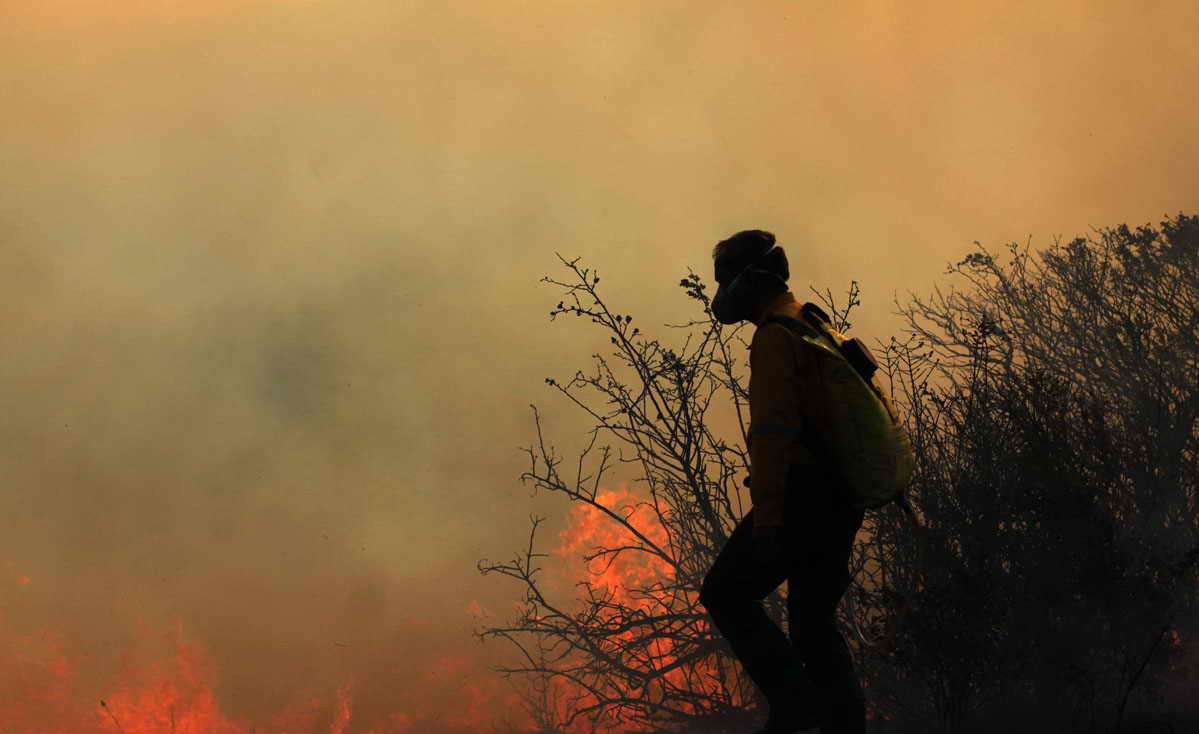Wildfires have burned 232 hectares of lands under the protection of the Department of Environment so far in the current Iranian year (started March 20), signifying a 40% decline compared with the same period of last year.
The DOE had managed to reduce fires in protected zones to 3,400 hectares in the last Iranian year (March 2015-16), down 50% from 6,700 hectares the year before, ILNA reported.
According to Ali Teymouri, director of the Hunting and Fishing Office at the DOE, the decline is due to “the department’s effective measures,” including forming rapid response teams in every province, holding maneuvers in high-risk regions, equipping park rangers with fire extinguishers and installing monitoring systems.
The official pointed to stationing helicopters in 14 provinces, which has helped significantly reduce firefighters’ response time and accelerate the process of putting out wildfires.
“In some provinces, firefighting forces can arrive at inaccessible regions within 15 minutes, which is a record for the department,” said Teymouri, without naming the provinces.
The department is targeting 20% reduction in forest fires in the remaining months of the current year (ends March 20, 2017). If achieved, wildfire cases in DOE-protected regions will see a 70% decrease compared to 2014.
“To help meet that target, prevention and monitoring measures have been adopted as one of the benchmarks to evaluate the performance of provincial DOE directors,” he said.
Also, fire sensors have been installed in strategic locations in certain woodlands with good results, hence more sensors will be installed in the forests of Golestan, Fars, Lorestan and Ilam provinces to ensure early detection of fires and help prevent their spread.
Raising public awareness, promoting correct ways of camping and installing more warning signs in vulnerable areas are among other measures to help prevent the disaster.
To combat intentional fires, legal punishments for culprits have been devised.
“Based on the Islamic Penal Code, offenders will serve between two- and five-year prison terms, while would-be arsonists caught before setting fire will be imprisoned for between six months and two,” Teymouri was quoted as saying by ISNA.
Teymouri also called on campers to cooperate by making sure their campfires are completely put out before leaving the site. He also asked locals and travelers to contact the nearest police station in the event of a fire.
Currently, 278 regions, including national parks, protected zones, no-hunting zones and natural heritage sites covering a total of 17.5 million hectares, are under the protection of the department.
Lack of Equipment
Despite the promising figures, the total damage inflicted by wildfires on Iran’s environment is colossal.
Fires that frequently incinerate large portions of Iran’s dwindling forest areas inflict upward of 3.2 trillion rials ($94 million) in damages every year. On average, wildfires annually destroy 15,000 hectares of woodlands.
In the last calendar year that ended in March, fires spread through more than 44,800 hectares of forests, irreparably destroying 18,000 hectares.
Around a month ago, wildfires burned 150 hectares of Zagros Forests in Kohgilouyeh-Boyerahmad Province and 5 hectares in Ilam Province.
Around 3,000 hectares of Fars Province’s forests in the vicinity of Pasargadae, the tomb of Cyrus the Great, were burned to the ground in three consecutive days of incessant burning in mid-June, which is so far considered the worst case of wildfire this year.
The country has experienced 39 fire incidents across 10 provinces over the first three months of the current Iranian year.
Iran’s topography, together with human carelessness, has made the country highly prone to wildfires. Yet, the relevant bodies, including the Forests, Range and Watershed Organization, suffer from lack of equipment, especially for aerial firefighting, which is considered the most efficient way of combating the disaster.
In its latest efforts, the FRWO reached an agreement with the Armed Forces of Iran and the Red Crescent Society to make use of their air fleet. Their aircrafts, however, are not perfectly suitable for the purpose.
According to Colonel Qasem Sabzali, the head of FRWO’s protection unit, the choppers are capable of carrying water tankers, firefighting staff and equipment to the spot in a short time, but he failed to mention whether the aircrafts are able to spray water across the fire.
“Specialized firefighting aircraft cost billions, which the organization currently cannot afford, so we decided to rely on the existing resources to enhance our protection efforts,” Sabzali told Financial Tribune on the phone.


